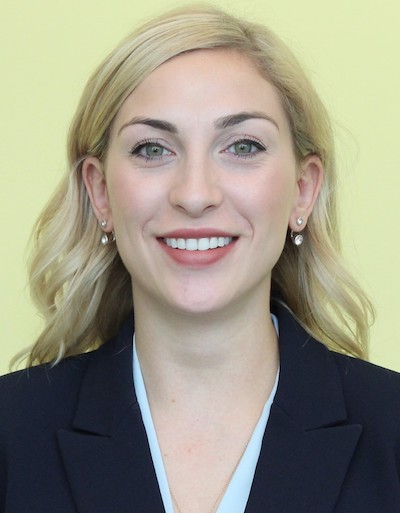By Kant Nguyen
Companies use artificial intelligence (AI) for conducting business and invest billions into the technology. In fact, research reveals a greater than 300% increase in investment in AI in 2017 compared to the previous year, and another study estimated the AI market will grow from $8 billion in 2016 to more than $47 billion in 2020.[1] Moreover, a recent report predicted the global AI market to be 228 billion by 2026.[2]
This explosion in AI investment prompts questions: Why are businesses so interested in AI? And, how is AI understood in an intellectual property context?
Defined as “the capability of a machine to imitate intelligent human behavior,”[3] AI is a field of computer science that includes machine learning, deep learning, natural language processing, speech processing, and machine vision.[4] AI tools automate decision making using programming rules and training data sets.[5] In businesses, this involves the use of intelligent computer software with human-like capabilities to boost revenue, improve customer experience, increase productivity and efficiency, and drive business growth and transformation.[6]
A simple example of AI utilized in businesses is automated customer service chat bots, used by many major retail companies, such as Amazon, Target, and Wal-Mart. Instead of companies hiring customer support specialists, data used by AI can analyze sets of questions to redirect a prospective customer to an answer.[7] Even if a human agent needs to intervene and provide customer support, these “chatbots” cut the workload and allow agents to focus on more critical steps to finding solutions to customers’ problems.[8] Current studies show that in 2020, 85% of customer interactions were managed without a human.[9] On a global scale, AI researchers predict that there is a 50% chance of AI outperforming humans in all tasks in 45 years and of automating all human jobs in 120 years.[10]
One issue with the relationship between IP and AI is inventorship. Computer implemented inventions (CII) have yet to be recognized as an “inventor”. In the United States, under 35 U.S.C § 100(f), an “inventor” is defined as an individual—or if there is a joint invention, the individuals—who invented or discovered the subject matter of the invention.[11] As AI becomes more and more complex, there may be a situation in which potentially patentable subject matter is invented without human intervention. For example, what if an AI algorithm – without any human intervention – develops a new drug, a method of recognizing diseases in medical images, or a new blade shape for a turbine?[12]
However, the US Patent and Trademark Office (USPTO) rejected an attempt by a team of researchers from the University of Surrey to name an AI system as the inventor in two patent applications. USPTO concluded that the statutory provisions governing patents precluded a finding that the term “inventor” can refer to an AI system. The researchers argued that the AI system named “Device for the Autonomous Bootstrapping of Unified Sentience” (“DABUS”) had “identified the novelty of its own idea before a natural person did” and the AI system should be recognized as the inventor.[13]
The USPTO rejected this argument by analyzing the plain language of 35 U.S.C. § 101, which states that, “Whoever invents or discovers and new useful process, machine, manufacture, or composition of matter …” USPTO concluded that this language indicates that “whoever” must refer to a natural person.[14] Additionally, 35 USC § 115 refers to individual pronouns such as “himself” or “herself” when identifying possible inventors. Still, the USPTO left open the question of the extent of protections available to owners of inventions created with the assistance of AI.[15] This has also been the case in the European Union [16] It remains to be seen what the international system will do.
AI has completely revolutionized nearly every aspect of our lives. Today, marketing algorithms detect our interests and provide the targeted advertisements that we see when scrolling on social media. Produce we buy at the supermarket might be harvested from farms utilizing AI drones that can detect ideal growing conditions from weather and soil nutrients.
Whether AI will ever be recognized as a legitimate sole inventor of a patent may change over time, but right now it appears highly unlikely. USPTO has issued a request for comment on IP issues, and responses from the public included 56 individual responses and 43 from organizations, with near unanimity that AI is merely a tool, like any other tool used by humans, albeit one that is currently of philosophical interest to IP experts.[17]
[1] Gil Press, Top 10 Hot Artificial Intelligence (AI) Technologies,Forbes, https://www.forbes.com/sites/gilpress/2017/01/23/top-10-hot-artificial-intelligence-ai-technologies/?sh=f07d5f192878 (last visited July 27, 2021).
[2] Global Artificial Intelligence (AI) Market to Reach $228.3 Billion by 2026, https://www.prnewswire.com/news-releases/global-artificial-intelligence-ai-market-to-reach-228-3-billion-by-2026–301293951.html, 2021 (last visited 7/27/21)
[3] Get Ready for AI with MATLAB, https://www.mathworks.com/campaigns/offers/ai-with-matlab.html, (last visited 7/27/21)
[4] Maya Medeiros, Jordana Sanft, Artificial Intelligence and Intellectual Property Considerations, Financier Worldwide, https://www.financierworldwide.com/artificial-intelligence-and-intellectual-property-considerations (last visited 7/21/2021).
[5] Id.
[6] Business World, What Is Artificial Intelligence (AI) in Business?, https://www.businessworldit.com/ai/artificial-intelligence-in-business/#:~:text=Artificial%20intelligence%20in%20business%20simply,drive%20business%20growth%20and%20transformation. (last visited 7/21/2021).
[7] Abhishek Shanbhag, 10 Powerful Benefits of Chatbots in Customer Service, BotCore, https://botcore.ai/blog/10-powerful-benefits-of-chatbots-in-customer-service/ (last visited 7/21/2021).
[8] Id.
[9] Supra, note 2.
[10] Grace Katja, Salvatier John, Dafoe Allan, Zhang Baobao, Evans Owain, When Will AI Exceed Human Performance? Evidence from AI Experts, Future of Humanity Institute, Yale University Department of Political Science, (2018).
[11] 35 U.S.C § 100(f)
[12] Frank A. Decosta, III, Ph.D, Aliza G. Carrano, Intellectual Property Protection for Artificial Intelligence, Westlaw Journal Intellectual Property, https://www.finnegan.com/en/insights/articles/intellectual-property-protection-for-artificial-intelligence.html (last visited July 29, 2021).
[13] Imogen Ireland, Jason Lohr, ‘DABUS’: The AI Topic that Patent Lawyers Should be Monitoring, https://www.managingip.com/article/b1n8q624s4vyv4/dabus-the-ai-topic-that-patent-lawyers-should-be-monitoring (last visited July 27, 2021).
[14] Jones Day, Reboot Required: Artificial Intelligence System Cannot Be Named As An Inventor Under U.S. Patent Law, USPTO Says, Jones Day, https://www.jonesday.com/en/insights/2020/05/reboot-required-artificial-intelligence-system-cannot-be-named-as-an-inventor-under-us-patent-law-uspto-says (last visited July 27, 2021).
[15] Id.
[16] AA Thornton, An interview with Mike Jennings of AA Thornton—Patenting AI and computer simulation, https://www.aathornton.com/patenting-ai-computer-simulation/, (last visited 7/21/2021)
[17] Christopher King, Inventorship, Patenting and AI: The Public Comments on Patenting Artificial Intelligence Inventions, JD Supra, https://www.jdsupra.com/legalnews/inventorship-patenting-and-ai-the-15657/ (last visited 7/28/2021).











